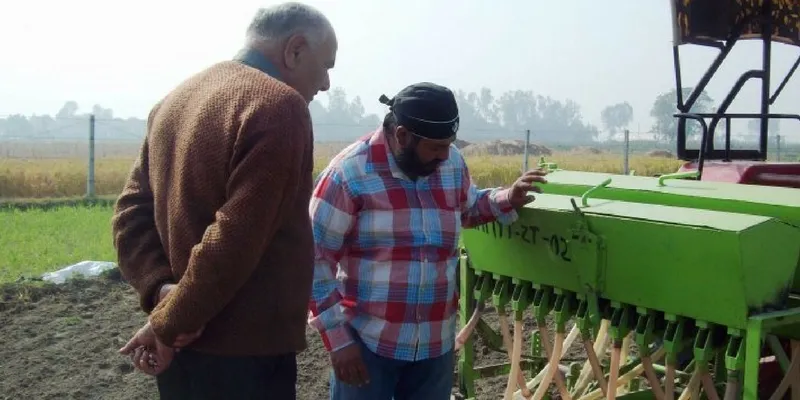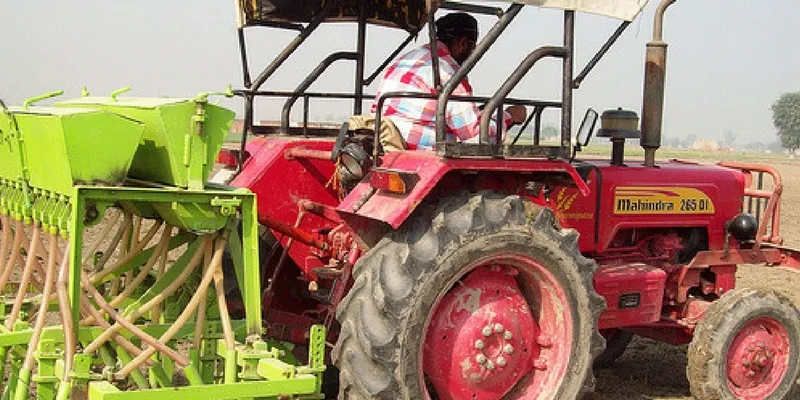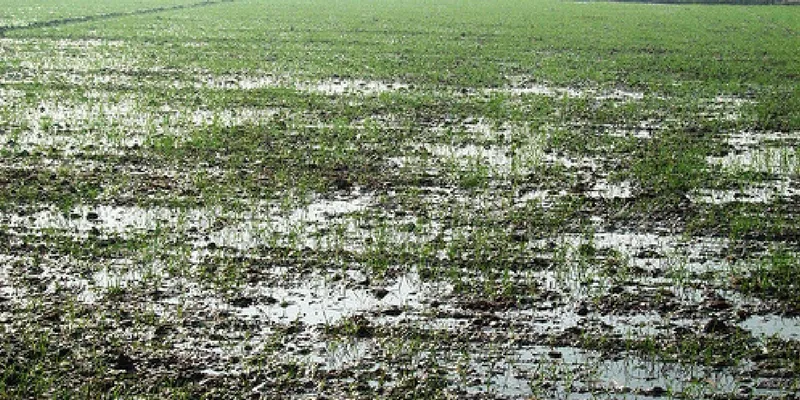How farmers in Karnal are using alternative methods to fight soil depletion
No-till agriculture, an alternative farming method, which helps prevent soil depletion as well as uses water efficiently, is being used successfully by farmers in Haryana.

Kalwaheri is a village of over thousand households comprising mostly small farmers and landless people tucked away in Karnal, Haryana. The district, once the birthplace of the Green Revolution, is now far from green. The application of modern techniques of agriculture and the introduction of high yield crop varieties led to an initial production spurt but farmers now say that their soil is less fertile, which has started hurting their harvest of paddy and wheat.
The crisis
The technology, narrowly focused on increasing production, was destroying the water and soil. The groundwater in this area was already saline, and unreasonable canal irrigation raised the water table by 3-9 m leading to waterlogging. Farmers had to apply gypsum in the soils to make them cultivable. There were places where tube wells were used to pump water into the canals to reduce waterlogging.

The lowering of the groundwater table led to a decline in productivity. Traditional crops in the area like pulses were abandoned and people shifted to wheat-paddy rotation. Once flogged to death in scientific prescriptions and the choice of all farmers, the paddy-wheat sequence, which assures farmers minimum support price, is faced with many challenges now.
Innovative approach
Innovation might be their only way out of this problem. Farmer Harpreet Singh had been struggling with this issue until an initiative of a research project came to his rescue. It helped him improve water use in agriculture, upgraded the soil health, and cut down on agricultural inputs cost.
Harpreet got a huge boost by the reorientation of research and extension toward alternative methods. He, along with some farmers, set up the Conservation Agriculture Small Farmers Association at Kalwaheri. The Association was actively supported by the agricultural scientific community namely the Haryana hub of Cereal Systems Initiative for South Asia (CSISA).
To deal with the crisis, the farmers were encouraged by the scientists to take up zero till agriculture, which forced them to stop deep tilling and puddling in paddy. They no longer removed and burnt the crop residue. Harpreet was the first in his village to get his farm laser-levelled , a technique through which farms are made near-flat with a slight grade for drainage.
Unlevelled farms require extra water storage in paddy fields to accomplish puddling. Laser levelling is known to reduce water use by 25.57 percent while at the same time increasing yields by 10.82 percent, as per experiments at Punjab Agriculture Universty, Ludhiana.
For placing the seeds and fertiliser in his farm where he had left the crop residue, Harpreet used the seed fertiliser drill by Happy Seeder. They skipped over paddy transplantation and instead, direct seeded the rice. This method would also reduce the need for pesticides over the next two-three years once the mulch and permanent crop cover are established, according to Harpreet.
Other farmers who were sailing in the same boat but were sceptical of conservation agriculture joined Harpreet soon seeing the results from his farm. This way the concept of zero tillage, is now gaining increased attention. “To wean away other farmers the state will have to intervene in a big way and provide incentives”, Harpreet says. Convincing the other farmers has been a challenging task as the yield increase and savings in inputs takes some time to show up.

The CSISA project has made the laser levelling and seed cum fertiliser drill machines available to the Kalwaheri Cooperative for use on custom hire basis. Through collaborative efforts of CSISA platform and the Agriculture Department, hundreds of farmers were trained in various agronomic practices related to no-till agriculture. Harpreet and other enthusiastic farmers have readily adopted the no-till technique that promises to improve soil health and use less water.
To bring further precision in water application in the farms, CSISA installed tensiometers in the farms. This year, some farmers had taken up maize following wheat to come out of the paddy-wheat cycle. The State government has recently awarded the Kalwaheri Gram Panchayat for innovation in agriculture.
If the initiative in Kalwaheri has taught us one thing, it is that for a vibrant rural economy sustainable agriculture is a must.
Disclaimer: This article, authored by Amita Bhaduri, was first published on India Water Portal. The views expressed by the author are her own and do not necessarily reflect those of YourStory’s.







